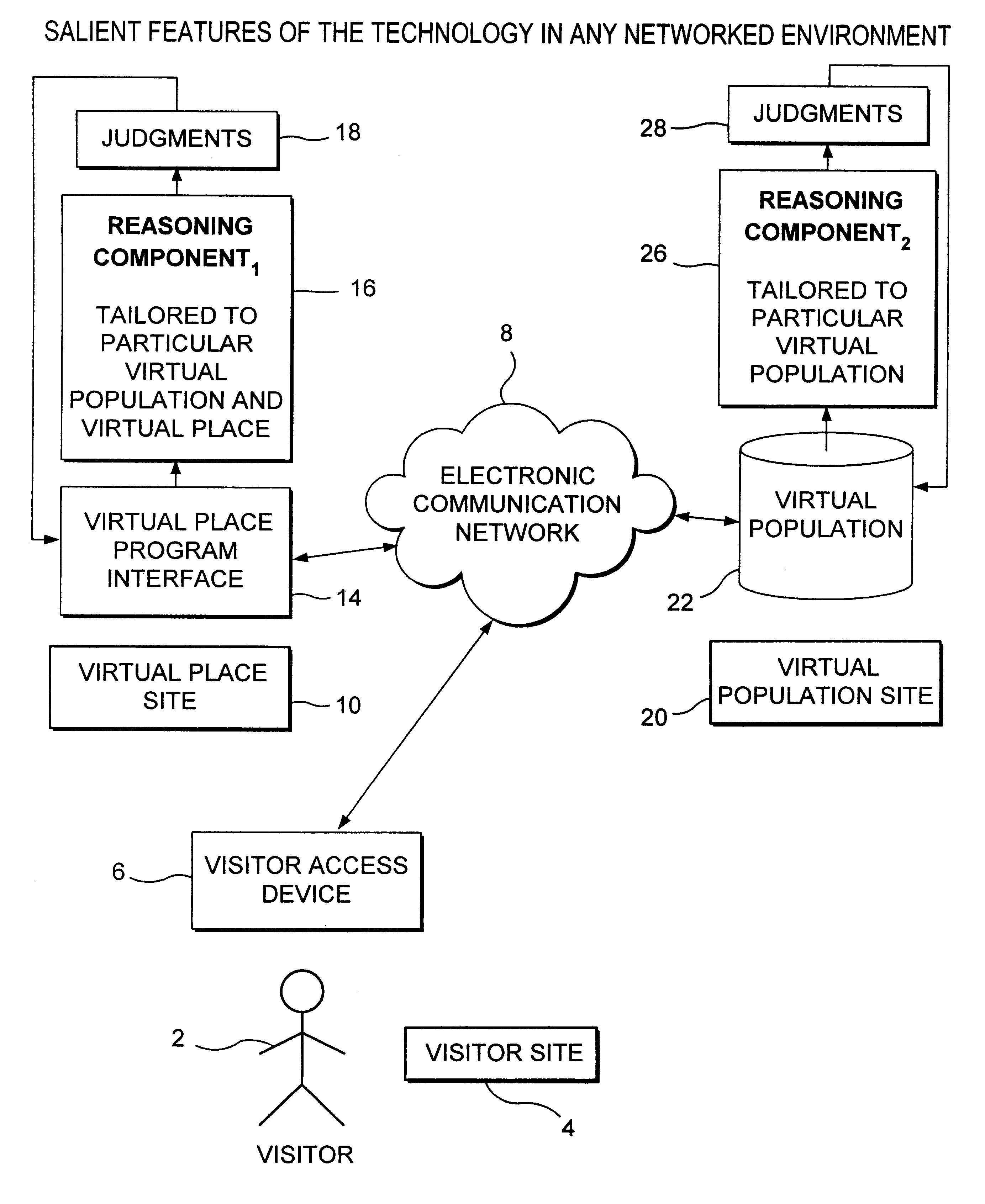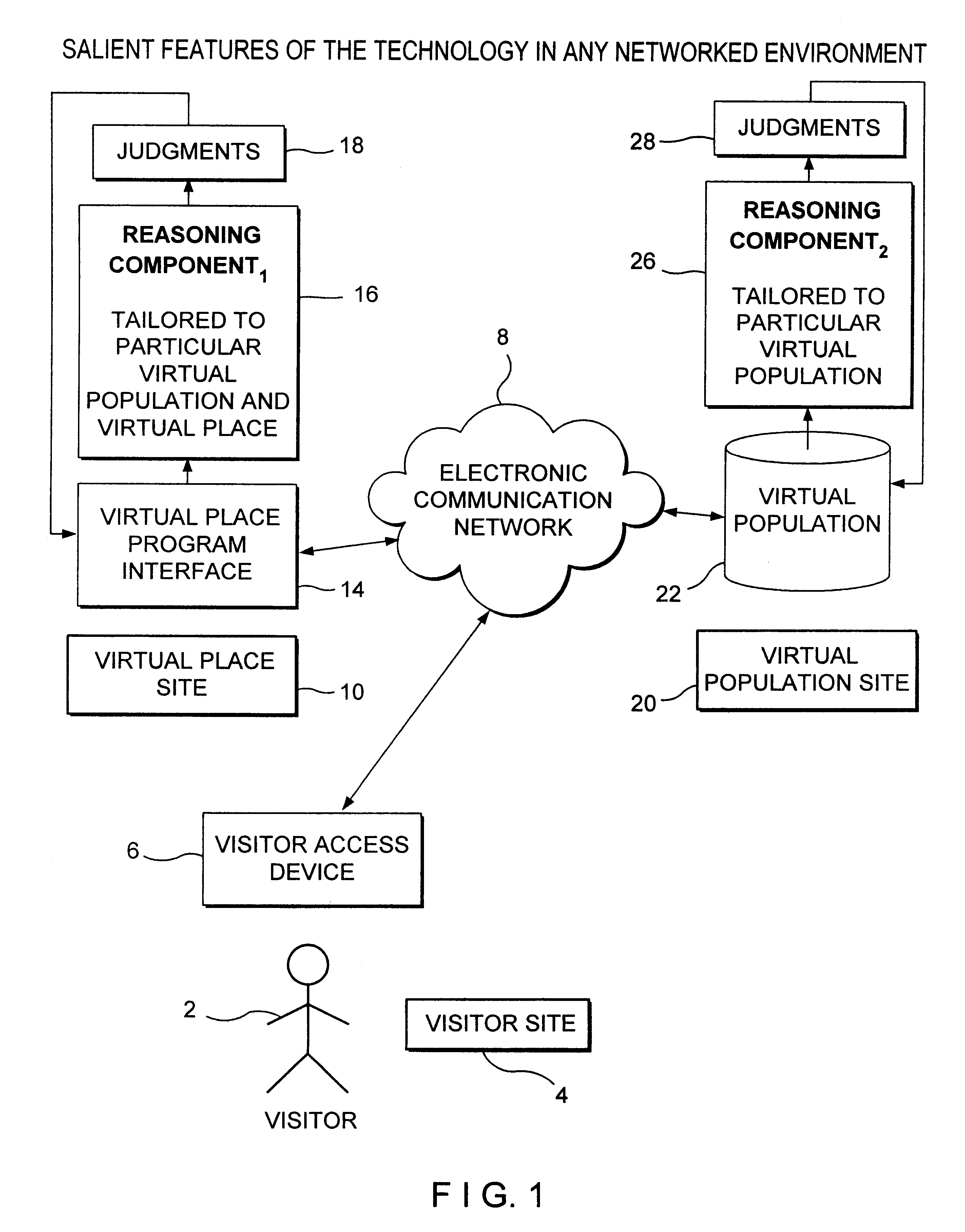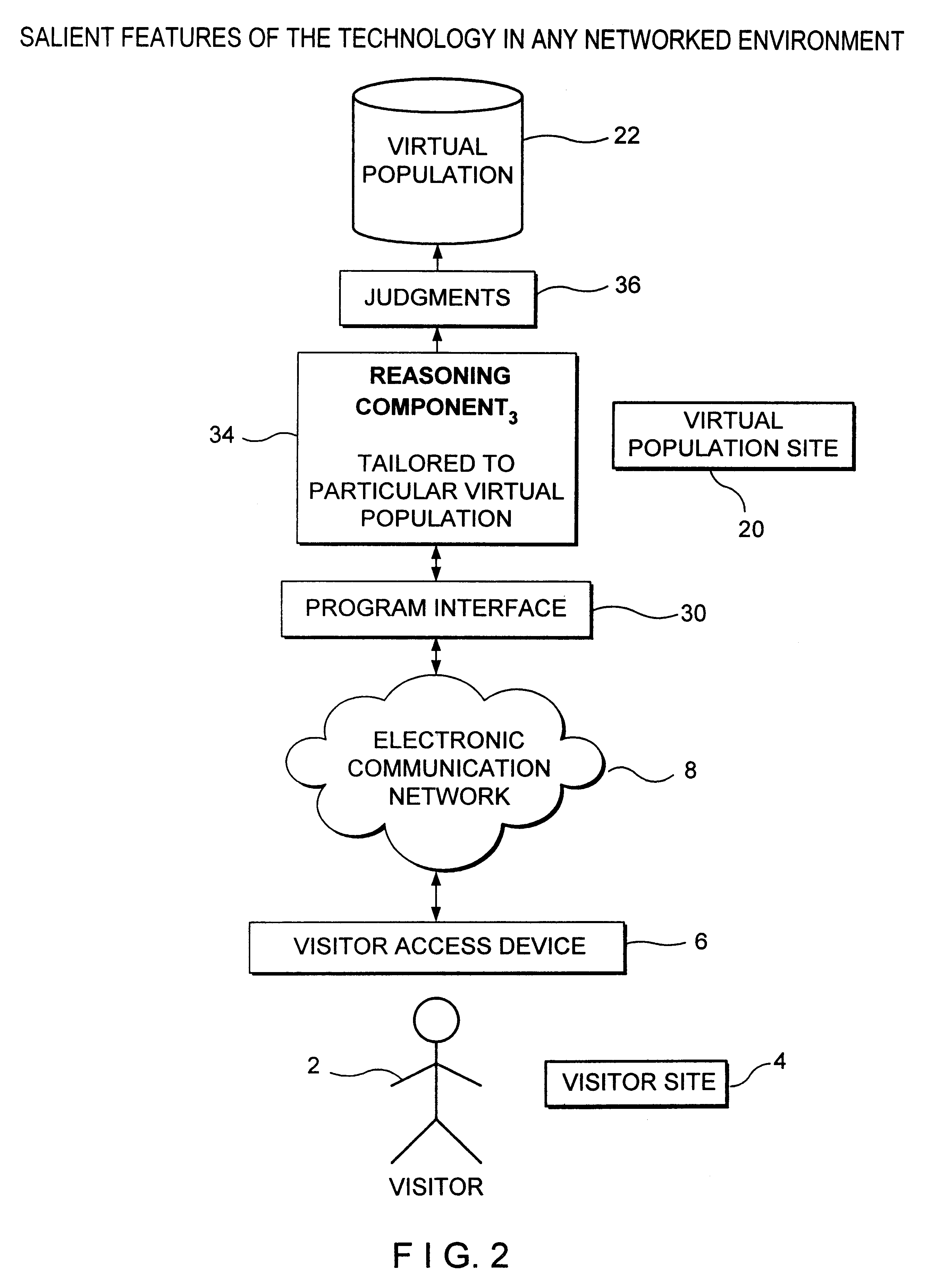Systems and methods for virtual population mutual relationship management using electronic computer driven networks
a mutual relationship management and virtual population technology, applied in program control, instruments, marketing, etc., can solve the problems of limited system ability to provide visitors with unique visitation experiences, system is also limited to advertising, and marketer has only been able to deliver personalized messages
- Summary
- Abstract
- Description
- Claims
- Application Information
AI Technical Summary
Benefits of technology
Problems solved by technology
Method used
Image
Examples
example 2
An Unknown Visitor
In this example, an unknown Visitor, Tamara, comes to the same e-Store that Beatrice is visiting. This could occur at the same time as any number of visitors can be handled, each individually.
As Tamara enters the e-Store, an attempt to load her Virtual Representative reveals that there are no relevant facts about her at all. Her Virtual Representative is empty. Tamara is an unknown visitor. Nonetheless, the following call to the API serviced by the plugin will be made:
IntelligentRealEstateManager (Main Page Real Estate Offer, Unknown1 Id)
The ID is Tamara's Id, which is "Unknown 1".
The following rule is in the RuleBase:
IF Unknown Visitor THEN Main Page Promotion Offer IS $10 gift certificate for registering
In the same place where the $30 gift certificate promotion was shown to Beatrice, (the area identified in the call above as "Main Page Promotion Offer"), a $10 gift certificate offer is shown to Tamara. "$10 gift certificate for registering" is shown her in the ho...
PUM
 Login to View More
Login to View More Abstract
Description
Claims
Application Information
 Login to View More
Login to View More - R&D
- Intellectual Property
- Life Sciences
- Materials
- Tech Scout
- Unparalleled Data Quality
- Higher Quality Content
- 60% Fewer Hallucinations
Browse by: Latest US Patents, China's latest patents, Technical Efficacy Thesaurus, Application Domain, Technology Topic, Popular Technical Reports.
© 2025 PatSnap. All rights reserved.Legal|Privacy policy|Modern Slavery Act Transparency Statement|Sitemap|About US| Contact US: help@patsnap.com



